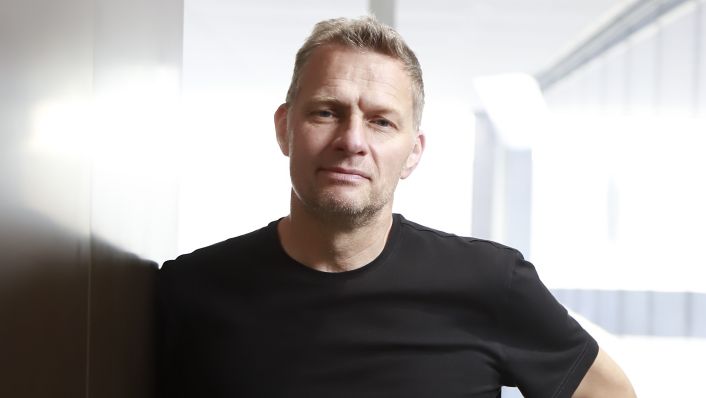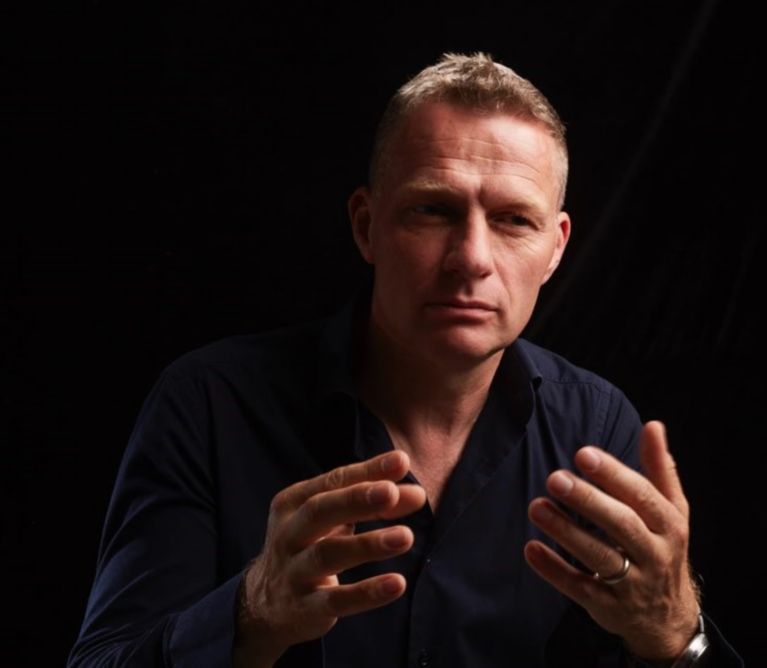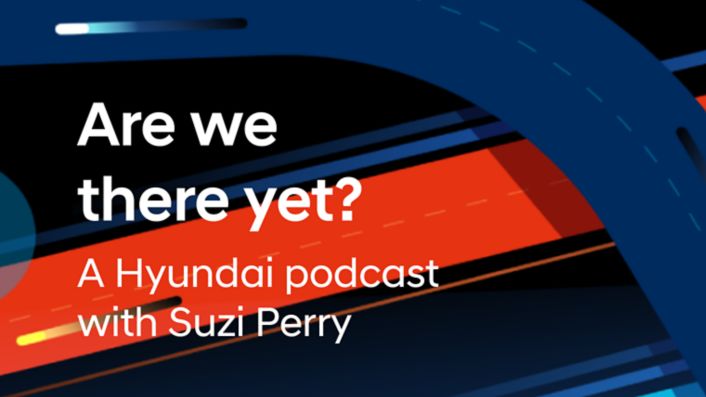Press material
Simon Loasby, Head of Hyundai Style, began his career at Rolls-Royce and Bentley after having been sponsored to complete his studies at the Royal College of Art in London, UK. After a long career at Volkswagen, working in Germany and for nearly a decade in China, he joined the Hyundai Group and was instrumental in setting up the design studio in Shanghai. In 2019, Loasby moved to Korea to oversee Hyundai brand projects globally, utilizing the experience and applying the anthropological understanding of culture, society and taste he gained while working in England, Germany and China to expand the brand portfolio in different regions around the globe. We had a chance to speak with him about his mindset, perspective and outlook for the future of the Hyundai brand.
Mr. Loasby, individualization is one of the global megatrends. It leads to an enormous differentiation of life concepts and tastes. Are there still principles of car design that work globally and in all kinds of milieus? What are they?
Hyundai has studios all over the world and, as designers, we're almost like anthropologists in each region. We're looking at what's happening. We're looking at what the current trends are, but also identifying where the future trends will be. Some markets have things that are the same. Some markets are really unique. Europe tends to want more compact cars; they tend to prefer what I call a high-density, small product. Whereas if we look at Korea and America, they tend to like larger cars. In Korea, we like sedans actually still, which is a trend that is fading in other regions, but in Korea it's still a big statement.
I always looked at it in terms of how societies are developing in different ways and America, China, India, Europe, Korea have certain different traits. I would say that China is the most advanced in tech and electronics and it's influencing the rest of the world. Whereas Europe is a little bit behind, possibly due data security. America is somewhere in between. The markets have different speeds and there are some trends that are very similar. If you have good design and good proportions, it's probably going to work anywhere. It might be in different sales volumes because there's different taste for different typologies.
Good proportions and good design works globally.
Would you say that there are some fundamentals necessary in terms of making a good car design? What are they?
If we look at our design philosophy, Sensuous Sportiness, what we're trying to do is create more emotional appeal. Sensuous doesn't mean everything's super sculptural and soft, it just means we are creating an elevated, emotionally appealing design. The other building block is sportiness, which is all about creating a great proportion. Think of an athlete. If he or she has a good proportion, that attractiveness works globally.
That's what we do in design. We identify that good proportion. That's our sportiness. Then we create the story of the typology, the architecture, what that car is for and the function that it has in the portfolio. Those are the building blocks. When we've got all the technology integration, then we get to the style execution. But it’s one of the last things we do.
If you compare Korean to European car design, what are the biggest matches? And what are the crucial differences?
I don't believe there's a Korean type of car design or European type of car design. Trends these days are so global. We can go back to 1997 and blame the Internet for this… But there is a typology of vehicle which fits the market taste better in Europe or better in Korea. What it then comes down to is to build a story of what the brand is trying to do; and to find, what I call, the role of that car in the portfolio.
It’s a bit like the role of a chess pieces. When you have a full chess board, you have your team and different pieces have different roles. That is our lineup of Hyundai product.
Different cars have different roles, and they fit different people, different segments. Yet somehow you can still tell they're all Hyundai.
You can tell they're all from the same chess set. We like to describe this as a new level of consistency. A good example of this is the consistency of the parametric pixel on our Ioniq products. The pixel is like the base of our chess pieces. Unique and instantly recognizable.
Our job in design is to find what is super modern, but also authentic for Hyundai. To find that Korean-ness that is globally fantastic and loved. This gives us an authenticity about creating an inspirational base for our ideas.
That's why I'm a keen lover of exploring every bit of Korean food, design, countryside, design, architecture. We look at K-TV, K-music, K-fashion, how it's influencing the world and analyzing that and saying, "Okay, what do we have as our story that gives us a new creative palette for Hyundai?" And funnily enough, the pixel is one of those things.
We have the one of the only languages in the world, if not the only language, with the pure pixel in the alphabet. The Hangul letter “mium” is the perfect pixel. So you could argue that when King Sejong developed the Hangul alphabet in the 1400s he created part of our design language.
The Hyundai parametric pixel design language of IONIQ 5, 6 and 7 – is arguably 600 years old.
When you look at the exterior and interior of Hyundai's vehicles, where is the essence of Hyundai's design philosophy most evident and tangible for you?
I think you have to look at both big and small. If you look at our lineup of vehicles, the essence of our philosophy is that they are deliberately not all the same. They deliberately have a different silhouette, a different typology, according to what that car does and what segment it’s in. So if you look at the SEVEN show car, it is deliberately different from an IONIQ 5 because they have different roles to play.
We have what we call the Hyundai look, where the typology of the cars and the architecture of the design is deliberately different from each other so they're refreshing and the customer sees much more choice in the showroom, and choice that fits for them. Then there's a completely new level of consistency in the detail execution. You'll see a number of familiar, let's call them building blocks, in the detail. If you look at the TUCSON with its triangulated parametric surfacing, you've got a hint of that in IONIQ 5 as well.
The TUCSON's parametric jewel grille, which is ‘through illuminated’, is unique to Hyundai. Nobody else has that kind of illumination through the design element of the grille. You will be seeing that in more of our products.
Light is arguably the new chrome. That will continue as one of our design elements along with the pixel. That is a unique element. It's Hyundai's Minecraft.
Instantly acceptable and recognizable for a very young generation, but also the generation who know the first computer games from the ‘70s. Remember the first computer tennis games, where you had a pixel which was a ball bouncing back and forth? The pixel works across multiple generations.

You’ve once said that “Design is about not worrying about being wrong.” Can you elaborate on that please?
That quote is absolutely correct in my view. Designers shouldn't worry about getting it wrong. That's part of our internal philosophy, our daily work with the designers. If you're worried, you'll be less creative. Sir Ken Robinson’s TED talk ‘Do Schools Kill Creativity?’ a number of years ago was hugely influential in my thinking and I learned a lot from him. This philosophy of allowing people the freedom to experiment, to try. Okay, give them guidelines, but if they get it wrong there's nothing bad about that.
Only this afternoon, I looked at exterior work from our European team and my first reaction was, "No," on one proposal. Then I thought further: "Wait a second, go back." The reason I'm saying no is because it's taken me somewhere uncomfortable that I'd not considered before. And so my “No” actually means “Yes, carry on”. Because that's something I wasn't expecting and it's brave to try it, it's brave to show it. I'm a full encourager – within the guidelines of the direction of what we're trying to do for a new car – to experiment. So do exactly what we're asking and by all means try something else as well, that's okay. And if it doesn't work, that's okay.
It's a bit like when you drive somewhere and you take a wrong turn and then you hit a road you know and you think, "Actually that was a good shortcut." If you don't get it wrong first, you'll never know the shortcut.
Does that mean in turn that good car design should always be courageous? What was your last courageous design decision?
There are two things which are very important, bravery and belief. We don't do stuff just for styling. We analyze, we look at what's happening.
We come up with a reason why, and then we do it.
But we must truly believe in what we were doing, that we have the justification for why something is different. If it's unique enough we will, to some extent, lead the market towards us rather than them instantly loving it. Within any organization, typically departments are extremely conservative because doing something new is risky and scary. But if we don't do something courageous and brave and we don't believe it, then we are not innovative anymore.
Coming on the second bit of the question on what was one of my brave decisions: take the SEVEN show car with its unique EV SUV typology. The forward positioned windscreen, the sharp cut off at the rear and the arched roofline. We truly believe that we need to be mindful of what's happening in the world, mindful for our customers and to be ethical in terms of efficiency to give a better all-electric range.
An electric SUV is a big, heavy car. We wanted to make it as efficient as we could. So we came, we looked and we analyzed. How do we make it more efficient? So we developed a typology that was absolutely not what you would normally do for an SUV. We believed it and we communicated with the story to our teams, to our chairman, to all of our colleagues. We convinced them that we had a 100% belief that this is the way to answer the question. Indeed, we redefine the question sometimes. That’s how SEVEN came about.
Obviously you need to be brave and courageous in order to come up with new, innovative proposals that are relevant and impactful. How do you balance courage with safe and reasonable decisions in your daily work?
Design is all about customer experience, customer safety and customer user experience. Design is everything combined. We're anthropologists looking at what's happening in the world, looking at the changes, look at how society has just massively changed in the last 24 months because of COVID. We are constantly watching and seeing the implications of all changes and coming with the best typology for different segments that suit how the customer will be in the future, what they will find attractive in the future. We're trying to give answers to questions that the customer hasn't even thought of today.
We will usually receive internal briefings from our colleagues at the start of a project. This is extremely valuable information, but we will sometimes challenge it. We must ask whether it works in a design context.
Our job is to be like five-year-old child asking, 'Why?'
When we make design model presentations we always attempt different ways of interpreting or pushing the brief. Some models may be exactly what’s expected and others may be interpreting the brief differently and actually challenge it. It'll create a great debate. But we have belief that these are ways of answering that question or challenging the original question. I'm happy to say that, quite often, we have a really good discussion around these things and sometimes the redefined question is chosen. Sometimes we get into trouble though too… But I guess that's our job. :-)
Biography Simon Loasby
Age: 54
Education: Imperial College (Mechanical Engineering) ‘85-‘89
Royal College of Art (Vehicle Design) ‘89-‘91
Started working at Hyundai in 2017 in China (Beijing and Yentai) and set up the Design Studio in Shanghai.
April 2019 moved to Seoul, Korea to start his current role as Head of Hyundai Style.
Design motto: Believe your intuition.
Greatest influences: William Towns (first design studio he stood in saw a clay model of the Lagonda) and Tom Tjaarda (went to work with him in Turin in the summer before the RCA). “Hugely grateful for those designers who gave me advice, gave me belief and helped me grow my skills”










